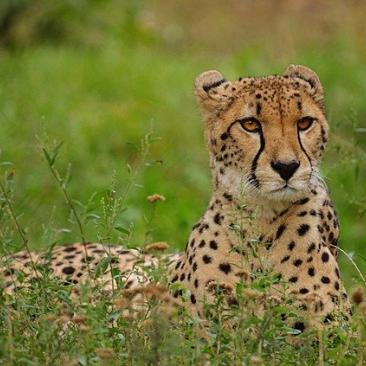FSC’s forest management standards place strict requirements on forest managers to prevent deforestation, avoid forest degradation, and maintain biodiversity and ecosystem functions.
When you support FSC, you support healthy forest habitats all over the world. Help cele-brate International Day of Forests by making a donation to FSC.

Namibia is home to a third of the world’s cheetah population. The Namibian Cheetah Conserva-tion Fund (CCF) Bushblok initiative is working with local communities to improve biodiversity and open dialogues with local farmers.
A problem for the Namibian cheetah is bush encroachment, a phenomenon referring to the undesirable thickening of bushes and trees. Cheetahs once thrived in the mixed woodland savan-nah of central Namibia, but human disturbance, overgrazing, fire suppression and removal of browsers like elephants and rhinos tilted the balance of grassland and trees. Thorn bushes choked the landscape, making it impossible for cheetahs to run or hunt.
To protect the cheetahs, the Namibian Cheetah Conservation Fund (CCF) Bushblok initiative came up with a process that could use the bush while restoring the ecosystem. They started using the thorn bushes to produce fuel bricks – called Bushblok - that can be sold to support the work. The clearing of land is not just about creating space for cheetahs; Bushblok also means job creation in a region where unemployment is high. Bushblok employs 30 people, and as the industry grows, so will jobs. FSC certifies that CCF’s woodland practices are sustainable and the Wildlife Friendly Enterprise Network certifies that the products deliver improvements for wildlife.. (Leading the Race for the Survival of the Cheetah Forest Stewardship Council, 2020)

FSC-certified timber companies help preserve gorilla populations in the Republic of Congo through the responsible management of forests. In the FSC-certified logging concession of IFO, Interholco in the Republic of Congo, there is a stronghold for 70,000 Western lowland gorillas.
The rules followed by IFO to comply with FSC requirements play a major role in this peaceful cohabitation. The forest concession is divided into 30 different areas, and only one of these areas gets harvested annually to let other sections of forest regenerate for 30 years.
Additionally, 27 per cent of the total forest surface is set aside permanently to preserve the trees, providing valuable resources for local populations – including local Indigenous Peoples – and providing shelters where there is a high concentration of animals and rare plant species.
All these measures have proved to be positive for the conservation of gorillas. In turn, gorillas who are big fruit eaters, contribute to forest regeneration by spreading seeds across the rainforest.
Certified forest concessions under FSC are also required to maintain constant dialogue with local communities to help protect their interests, keep them informed of the company’s harvest activities and to some extent, provide jobs. Through this dialogue, the company educates forest inhabitants about the benefits of managing forests sustainably and preserving their flora and wildlife.
This growth in gorilla population tends to prove that contrary to common belief, gorillas can co-exist with lumberjacks provided the loggers respect their natural habitat. The presence of the IFO lumberjacks seems to keep poachers away and contribute to an increase in the area where gorillas can feel safe – now twice the size of Belgium. (In New Documentary, Sustainable For-estry Sees Gorillas in Congo Thrive, 2019)

A study by conservationists from San Diego Zoo Global and the Bronx Zoo-based Wildlife Conservation Society (WCS) found that jaguar populations can thrive in well-managed FSC forests.
The research team set up camera traps to measure how effective these concessions are in maintaining healthy populations of land mammals, with a focus on jaguars (Panthera onca), the Western Hemisphere’s largest cat species.
The camera traps in Guatemala’s Maya Biosphere Reserve photographed 23 jaguars, whereas the traps in two Peruvian concessions in the Madre de Dios region recorded 43 individuals. Spot patterns, unique to each animal, were studied to accurately determine ‘recaptures’ of the same jaguar. Calculations based on captures and recaptures in the Guatemala site showed an average of 1.5 jaguars per 100 square kilometers. While in the Peru sites, the average density was 4.5 jaguars per 100 square kilometers.
Deforestation is largely responsible for habitat loss of species that thrive in bio-diverse regions of Central and South America, home to jaguars, tapirs, peccaries and other species. Studies such as this one offer a measurement of the impact of logging operations on wildlife and how low-impact timber management, as practiced in FSC-certified concessions, can be effective in conserving species such as the jaguar, classified as near threatened on the International Union for Conservation of Nature (IUCN) red list. (Healthy Jaguar Populations recorded in FSC-certified concessions, 2018).

